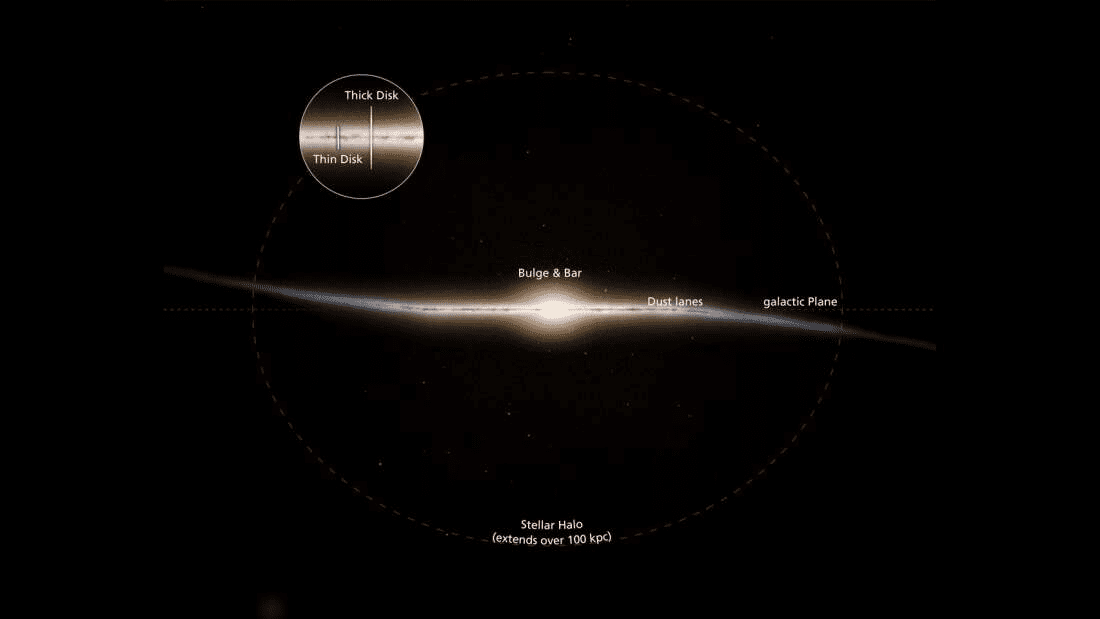Astronomers have discovered some of the most ancient stars in the Milky Way and tracked their positions and motions. This information has provided new insights into how our very own galaxy came to be 13 billion years ago. The very heart of the Milky Way has now been uncovered.
The researchers recently published a detailed understanding of how our galaxy evolved in its most exciting and chaotic period, roughly 11 billion years ago. They were able to track galaxy collisions that radically changed the Milky Way, bringing new stars and gas but also warping the disk of our galaxy where the spiral arms (including the one containing the solar system) are located.
The thin disk is 105,000 light-years across and no more than 1,500 light-years thick and still experiences star formation. There’s also a thick disk, enveloping much of the thin disk but with less density. At the center of the Milky Way, there is a bar-like structure that tends to host most of the older stars.

The simplified feature of the Milky Way seen from the side in this artist’s impression. Image Credit: Stefan Payne-Wardenaar / MPIA
However, the earlier work showed that the thick disk was there from almost the very beginning. We can’t simply point to the core and say that was the beginning of the Milky Way. Simulations suggested, based on our best understanding of the history of our galaxy, that three or four protogalaxies must have formed near each other. They interacted and merged in a compact core of no more than a few thousand light-years apart. That’s the heart upon which, through merger and gas flow, the whole Milky Way formed around.
To hunt for this ancient grouping, the team had to use data from the European Space Agency’s Gaia Satellite to study red giants. These stars are very bright, so it allowed the team to see further – but that is only half the battle. To understand the age of a star, an astronomer looks at how “polluted” it is. The very first generation of stars was made just by hydrogen and helium, and as they went supernova they spread all the other elements (referred to as the “metals” in astronomy), so each new generation has higher and higher metallicity.
Gaia data is vast but not super detailed when it comes to extracting metallicity, so the team trained a machine learning algorithm to go through a specific subset of Gaia data and analyze it to make it better. The subset had already well-known metallicity from the APOGEE program, so when the artificial intelligence learned how to extract the right answer it was deployed on the full Gaia data set of over two million red giants.
From there, the team was able to find the metal-poorest, most ancient stars, all older than 12.5 billion years and all within 30,000 light-years from the center of the Milky Way. These objects were there in the early years and could tell us much more.
The team hopes to study them in more detail to understand their chemical evolution and their motion. This could answer more questions about the formation of the Milky Way, including how many protogalaxies clumped and merged together.
The intriguing study was published in The Astrophysical Journal.
Source Link: Astronomers Have Found The Ancient Heart Of The Milky Way